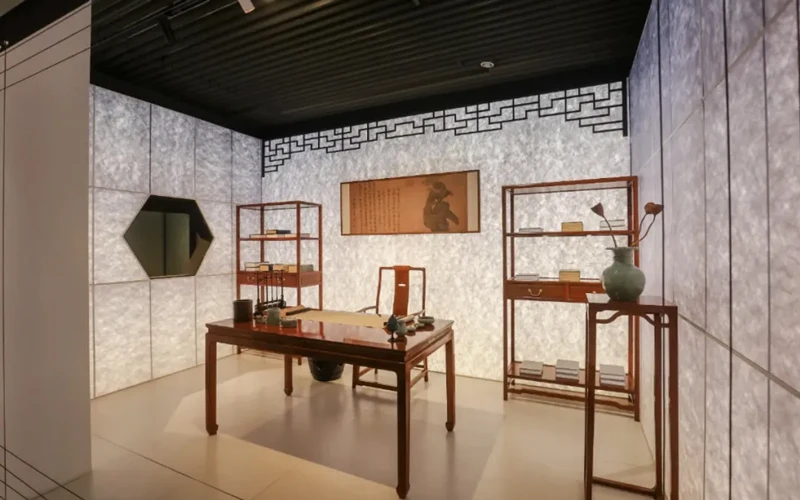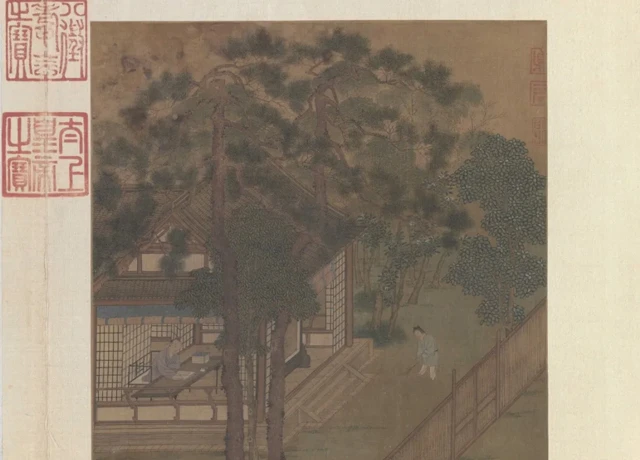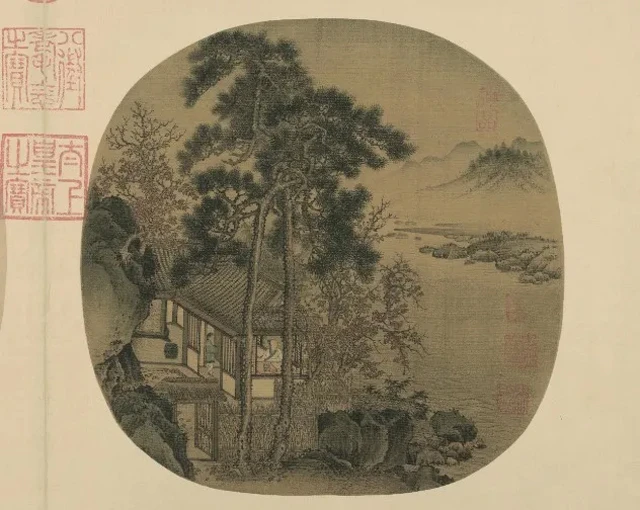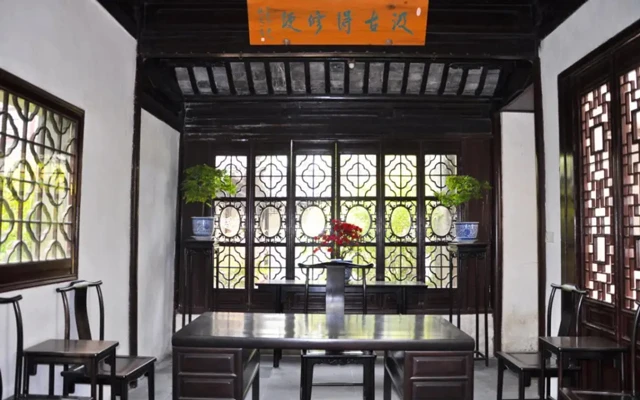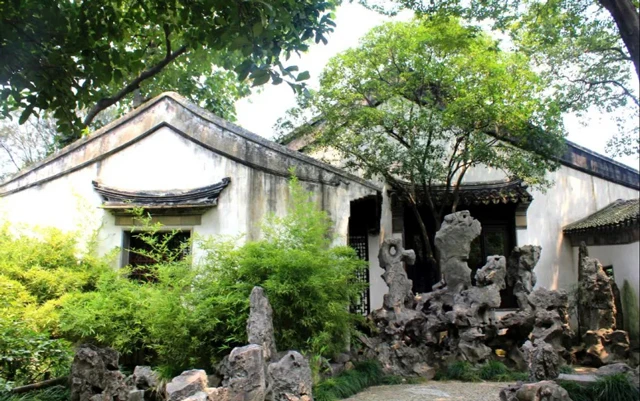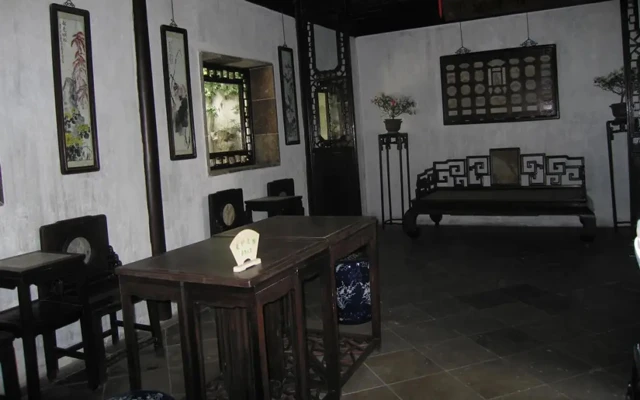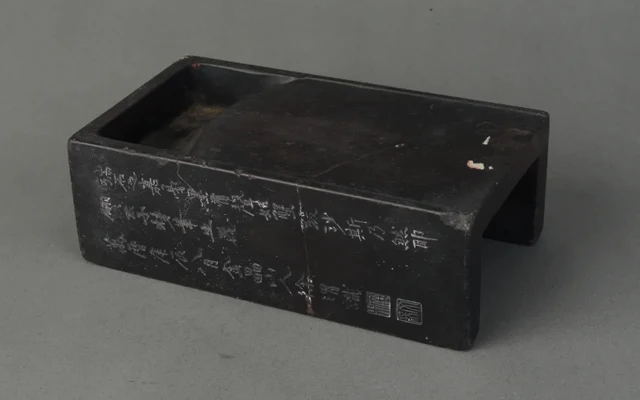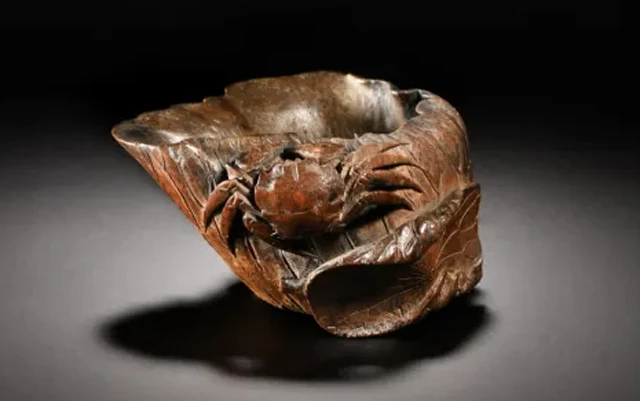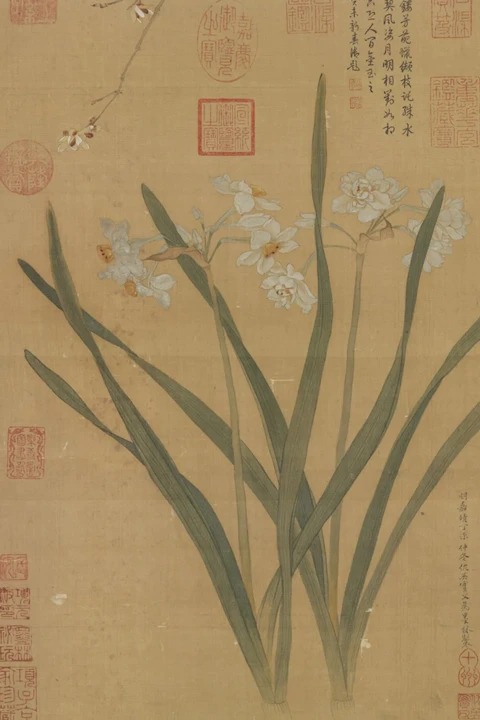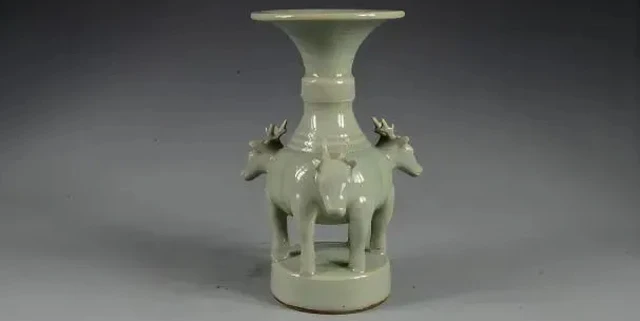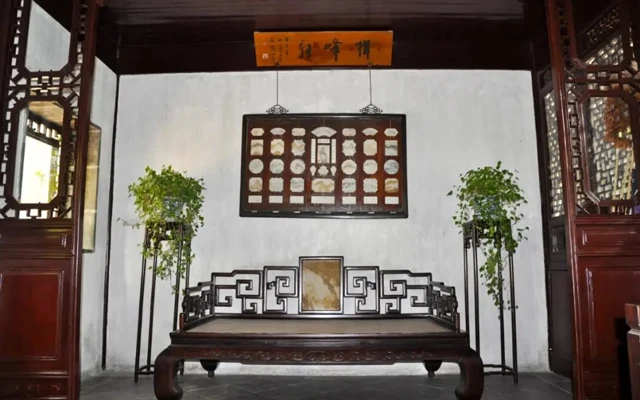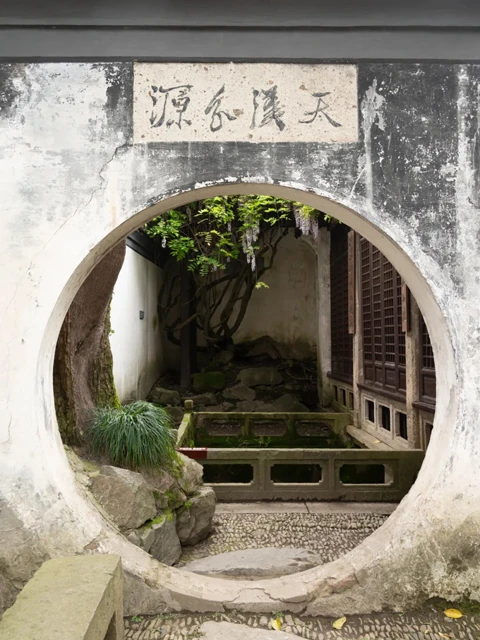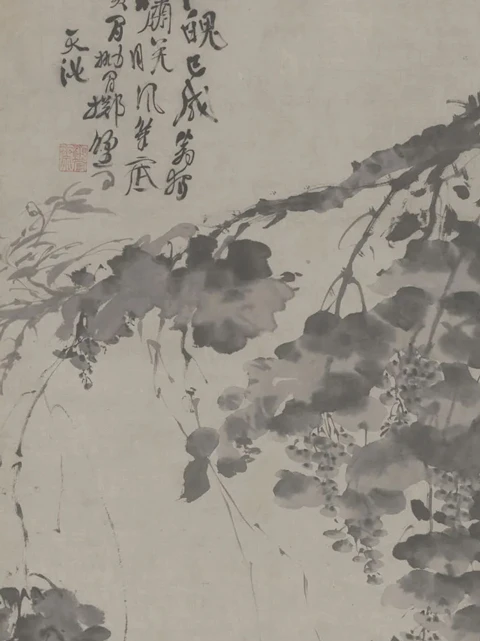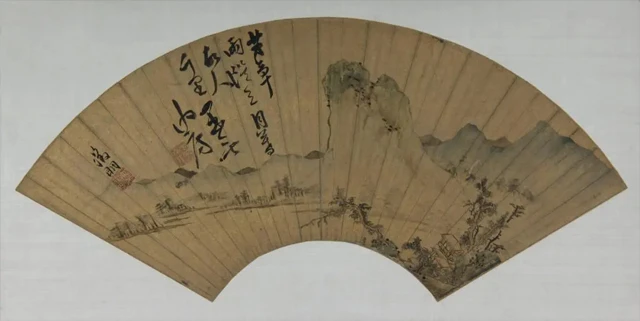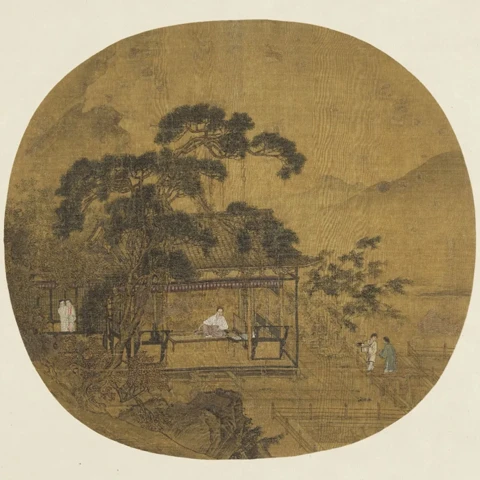The ancient Chinese revered the saying "Read ten thousand books, travel ten thousand miles" as the supreme path to pursuing knowledge. While traveling ten thousand miles requires venturing out into the vast lands, where should one go to read ten thousand books? Some may argue that in the past, there were examples like Kuang Heng of the Han Dynasty who read by the light coming through a hole in the wall, or Che Yin of the Jin Dynasty who read by the light of fireflies in a sack. As long as there is a desire to read, does it really matter where one reads? Is a specific location truly necessary?
Ancient literati believed that they were a group with aspirations, where each day included moments of quiet contemplation, accompanied by tea, poetry recitation, writing poems, and ultimately, writing in the Shu Zhai (书斋, study room). The study room was a specific space for literati to read and write, akin to a modern-day studio. However, the study was not merely a functional physical space; it encompassed rich spiritual and cultural symbolism, existing as a unique entity in the minds of literati.
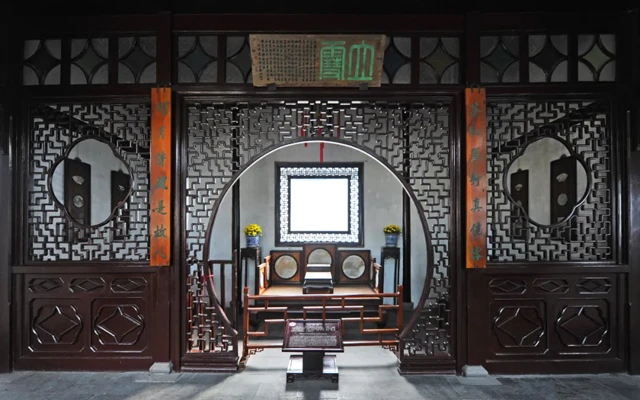
From site selection, design, construction, and decoration, to naming, couplet inscriptions, scholarship, and literary gatherings, the study room reflected the life ideals and aesthetic pursuits of literati, forming a realm of its own in traditional Chinese culture. Now, let us carefully construct a study room step by step, where you will immerse yourself in the wondrous spiritual world of literati.
01 The Selection and Construction of Shu Zhai
Initially, we must decide where to build the study room, drawing inspiration from the ancient practices of site selection. The earliest documented study room in history is the "Xuan Zhai" of Yang Xiong, a literary figure from the Western Han Dynasty. The exact location of Xuan Zhai remains unknown. From the Han Dynasty to the Wei, Jin, Southern and Northern Dynasties, there are limited records regarding the selection of study room sites, with slightly more documentation emerging in the Tang Dynasty. The scarcity of documented study room sites is attributed to the limited number of scholars with the means to construct studies.
During the Tang Dynasty, literati chose to establish their studies in secluded mountainous terrain, far from the distractions of the mundane world. For instance, Bai Juyi meticulously described the surroundings of his study room in the "Cao Tang Ji": "...to the east of the hall, there is a waterfall...to the west of the hall, it abuts the north cliff...in spring, there are colorful flowers, in summer, there are clouds in the stone gate, in autumn, there is the moon over tiger creek, in winter, there is snow around the stove..." Such secluded locations offered the benefit of minimal disturbances, allowing for focused reading and writing. Additionally, this choice resonated with the literati's inclination towards reclusion.
In the Song Dynasty, some individuals still preferred to locate their studies within mountain forests, while others favored integrating their studies into their own home gardens. Even within a garden setting, the study room was often secluded within a relatively independent space, creating a conducive environment for intellectual pursuits.
During the Ming and Qing Dynasties, study room culture reached its peak, giving rise to "Guidelines for study room Construction." The Ming Dynasty's "Yuan Ye" detailed methods for selecting study room sites: "The foundation of the study room, set within a garden, should be located in a secluded spot, inconspicuous to visitors, blending seamlessly with the garden." Following the advice of "Yuan Ye," we should place the study room in a tranquil corner of the garden, allowing for easy access from the study room to the outdoor scenic area, while maintaining the study room's discreet presence from outside visitors.
Once the location is finalized, considerations about the size of the study room arise. During the Song Dynasty, individuals often referred to their studies as "small rooms," "small pavilions," indicating that studies were generally compact. However, sizes varied among individuals, with an estimate suggesting that Lu You's study room was approximately 46.3 square meters, not a small space by any means. Scholars have conducted general surveys, revealing specific size ranges: small rooms typically ranged from 9-17 square meters, medium rooms from 24-30 square meters, and large rooms from 36-48 square meters. Let us be frugal and opt for half the size of Lu You's study room, a modest 23 square meter room.
For the room's design, we can take inspiration from existing Jiangnan gardens and replicate a style that appeals to us. Of course, mere construction of the room is insufficient; complementary facilities are essential. Tea is a requisite for reading and writing, thus a tea pavilion adjacent to the study room, equipped with a charcoal fire for boiling water, ensures a safe and convenient tea-drinking experience.
Many literati had an elegant courtyard in front of their studies, featuring a couple of intricately shaped artificial rockeries or wooden roots resembling stones. Let us incorporate such elements for leisurely appreciation, enhancing the ambiance. At this stage, the study room begins to take shape, but there is no time to rest, as the extensive task of interior decoration awaits.
02 Arrangement and Decoration
The early study room rooms were likely quite simple, such as in the study room of Wang Wei, where there were only a few items like a tea caddy, wine vessel, desk, and chairs. By the Ming and Qing dynasties, not only did the number of items increase, but each item was also meticulously chosen. To delve into every detail would require a whole book, but let's attempt to provide a general overview.
Firstly, the furniture aimed for simplicity. According to the "Chang Wu Zhi," it was suggested that a study room should only contain four chairs and one table, while other items like Buddha statues, short couches, low tables, could be added in multiples. The placement of the desk was particularly crucial, as it needed to reflect the personal taste of the owner. Avoiding a row of chairs against the wall was advised to prevent a stiff atmosphere. A folding screen should be placed in the room, along with bookshelves and bookcases for storing books and scrolls, though the collection should not be too extensive or diverse, as it would neither be visually appealing nor convenient for use.
Secondly, there were the scholarly tools and writing implements, essential for literati to compose poetry, essays, and paintings. Apart from the four treasures of the study room - brush, ink, paper, and inkstone - there were various other tools like Shui Zhong Cheng (water container for grinding ink), Shui Zhu (dripware for ink grinding), paste boxes, candle holders, paperweight, and brush washers, each with its own intricacies.
Thirdly, the selection and hanging of paintings were crucial not only to enhance the ambiance of the study room but also to reflect the owner's interests. Choosing paintings to hang in the study room was a test of the owner's taste. If the paintings were common, it indicated room for improvement in the owner's aesthetic sense.
Paintings could also be selected based on the season and festivals. For instance, in the "Chang Wu Zhi," it suggests, "In November, suitable paintings include snowy landscapes, plum blossoms, and narcissus. In December, paintings of Zhong Kui welcoming blessings, exorcising evil spirits, are recommended." There was also a certain art to how the paintings were hung; large horizontal scrolls were preferred for the main hall, while smaller landscapes and flower-and-bird paintings were suitable for the study room. If the painting did not match the scenery, it would be considered inappropriate.
Fourthly, the choice of vases and flowers needed to harmonize with the natural surroundings of the study room. Vases in the study room should be small in size, such as cylindrical vases, swan-neck vases, which needed to be scaled down to fit in the study room. The selection of vases should consider seasonal changes, with copper vases preferred in spring and winter, and porcelain vases in autumn and summer.
It was advisable to avoid vases made of gold or silver, and opt for less ornate designs. The variety of flowers should be kept minimal, ideally one or two types. The flowers did not need to be extravagant; wildflowers and grasses were suitable, aiming to evoke a sense of nature for the owner. Orchids, in particular, were highly favored by literati, with some even believing that a study room without orchids was unfit for storing the Four Books and Five Classics.
After discussing these meticulous details, it is only a drop in the ocean. The complexity of these arrangements may seem daunting, even just writing about them feels burdensome. It seems our study room will have to adopt a more modest style of decoration. In ancient times, literati were deeply involved in every aspect of building and decorating their study room rooms, even in the crafting of furniture, infusing their aesthetic preferences into every detail. They viewed the construction of a study room as a lifelong pursuit, sometimes even a generational legacy for their family, showcasing a dedication and perseverance that is truly admirable.
03 Study Room Reflects Aspiration
Upon completing the decoration, it is time to give a name to the study room room. This is an extremely important step, as many study room rooms have passed through the ages and are now no longer visible, yet their names still endure. It should be noted that, although it is a Zhai, the name does not have to be limited to a specific word.
Upon completing the decoration, it is time to give a name to the study room room. This is an extremely important step, as many study room rooms have passed through the ages and are now no longer visible, yet their names still endure. It should be noted that, although it is a Zhai, the name does not have to be limited to a specific word.
Single words like "Shi (室)", "Xuan (轩)", "An (庵)", "Tang (堂, hall)", among others, can be used, as well as two-word combinations such as "Cao Tang (草堂, grass hall)", "Shan Fang (山房, mountain house)", "Jing She (精舍, quiet hut)", "Shu Wu (书屋, book room)", and so on. The practice of using the name of the room or study room as a substitute for one's name became popular during the Tang and Song dynasties, with the most famous example being Xin Qiji's "Jia Xuan (稼轩)".
In the spring of the eighth year of Chunxi (1181 AD), Xin Qiji built a study room outside the city of Shangrao County, and because the surrounding area was all turned into fields, he named it "Jia Xuan" - meaning "the room overlooking the fields". Later, his disciple Fan Kai compiled the works of his teacher and named them "Jia Xuan Ci", and from then on, the name "Jia Xuan" almost overshadowed his real name. There are various ways in which literati choose names for their study room rooms, which can be broadly categorized to serve as references for us in the future.
The first method is to use the names of flowers and trees planted in the courtyard as the name of the study room. For example, the famous Ming Dynasty painter Xu Wei, at the age of ten, personally planted a wisteria under the south window of his study room, hence the name "Qing Teng Shu Wu". This naming method embodies the interests of literati, as we know, their fondness for a particular plant is often an appreciation of the character traits embodied by that plant. Xu Wei planted wisteria because he admired its ability to thrive among rocks, symbolizing resilience and pride.
The second method involves selecting the name of the study room from fine poetic or literary phrases, which naturally encapsulates the aspirations and sentiments of the literati. The study room name "Yin Bing Shi (饮冰室, Drinking Ice Room)" of the modern renowned scholar Liang Qichao, is derived from a passage in Zhuangzi: "Today I received a command in the morning and drank ice in the evening, yet my internal heat remains!" Using "drinking ice" to symbolize a state of anxiety and fear, it reflects deep concerns for the future of the country.
The third method is to directly express one's interests, hobbies, or personal pursuits. Lin Yutang named his study room "You Bu Wei Zhai (有不为斋)", expressing his principle of "doing some things and not doing others" in life. Some impoverished literati highlight the small and simple nature of their study rooms in their names, revealing both self-appreciation and self-deprecation. Liu Yuxi had the famous "Lou Shi (陋室, Humble Study)."
Another naming method is based on the treasures housed in the study room. One of the most famous examples is the "Zhi Yan Zhai" that participated in the collation of "Dream of Red Mansions", named after the inkstone of the famous Suzhou courtesan Xue Susu from the Wanli period of the Ming Dynasty. Some literati adopt study room names in admiration of past sages, like Tan Sitong, one of the Six Gentlemen of the Wuxu Movement, who named his study room "Mang Cang Cang Zhai."
Study room names can be self-selected or bestowed by others. Su Shi once named a study room for an official named Liang Shao as "Gan Lu (甘露, Sweet Dew)". Some literati are particularly devoted to a single study room name, such as the historian Chen Yuan. He moved seven times and changed locations eight times, but each study room was named "Li Geng (励耕, Encouraging Cultivation)". This is because his father was known by the name "Li Geng", and Chen Yuan held deep affection for these two words.
On the other hand, there are those who are more sentimental, like Su Shi, who once owned multiple study rooms with names such as "Nan Xuan (南轩, Southern Pavilion)", "Xi Zhai (西斋, Western Studio)", "Xue Tang (雪堂, Snow Hall)", and "Si Wu Xie (思无邪)". In ancient times, it was not possible to protect the copyright of one's study room name, and there were quite a few cases of duplication. The name "Wan Juan Lou (万卷楼, Ten Thousand Scrolls Tower)" was very popular; records show that from the Song Dynasty to the Qing Dynasty, there were thirteen individuals who used this name.
By now, we should have a rough idea for a study room name. However, having just a name is not enough; a study room couplet is also needed, serving the purpose of expressing one's aspirations. Xu Wei inscribed a couplet for his study room: "Awakening from the rain, poetic dreams arise with banana leaves; carried by the wind, the sound of books flows out with lotus flowers. (雨醒诗梦来蕉叶,风载书声出藕花。)" In this couplet, there are sounds of rain, wind, and books, as well as the colors of banana leaves and lotus flowers, blending sounds and colors into one, creating a delightful atmosphere. Reading and writing in such an environment is truly a blissful experience.
Zuo Zongtang inscribed a couplet for his study room: "With a body devoid of land, the heart worries for the world; after reading through ten thousand scrolls, the spirit communes with the ancients. (身无半亩,心忧天下;读破万卷,神交古人。)" The concern for the nation and the people is clearly evident in his words. Perhaps we may not have the same broad-mindedness as Zuo Zongtang, but following the example of Xu Wei in using a study room couplet to cultivate the mind and body can also be considered wonderful.
04 Spiritual World in the Study Room
The importance of the study room to literati can be observed from various aspects. Nevertheless, there are those who believe that the study room holds no significance. Wang Yunwu, the former general manager of the Commercial Press in China, once expressed his lack of interest in the study room, stating that a study room is wherever there are books. From a purely scholarly perspective, the attitude of "where there are books, there is a study room" should be upheld by scholars. However, unlike the Western study room which serves merely as a space for book collection and reading, the traditional Chinese study room is a multifaceted cultural complex.
Aside from being a place for the host to study room and create, the study room often serves as a space for collecting and appreciating cultural relics and antiques. It is also a venue for engaging in the study room and discussion of poetry, calligraphy, painting, and even seal carving. The intimacy of conversation with kindred spirits within a room, I believe, can only be enhanced within a study room.
Although a study room may be small, within it, scholars construct an immensely vast realm of the mind. The Ming Dynasty painter and calligrapher Wen Zhengming was a master of this. Due to financial constraints, he could not build his ideal study room, but he created imaginary pavilions to revel in, displaying his ingenuity.
Only with this realm of the mind can a study room truly be considered established. Perhaps we are constrained by present circumstances and cannot possess a physical study room, but we can have a study room within our hearts. Modern times often advocate for scholars to step out of their studies and engage in practical endeavors, which is undoubtedly a necessary scholarly approach. However, I believe that the expansive realm of the mind created by ancient literati is also something we modern individuals should explore.
